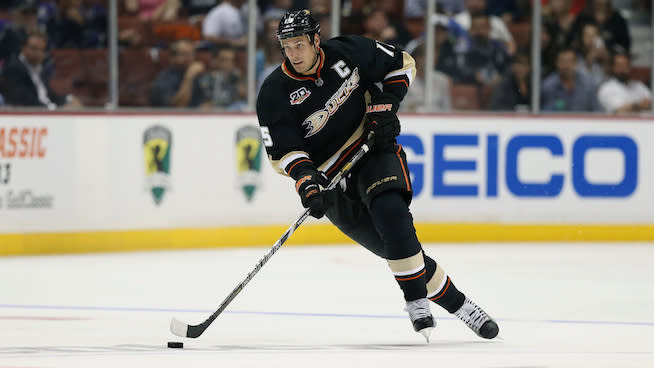3 Ways to Build Upper-Body Strength for Hockey

Thinkstock
I am not saying I trick players into doing the training they need by giving them what they want, but I confess that I never have trouble motivating my athletes to do these upper-body strength exercise for hockey.
Remember ten years ago when "core training" became a hot trend? The hockey players I work with kept asking, "Can we do core work?" or "Can you give me more core work for home?"
At first I thought, "Wow, these guys are really starting to get it. I must have done a great job of explaining the core's importance to them." (Check out a core workout for hockey players who want to win more puck battles.) Then I realized that they were just trying to get 6-pack abs and thinking that more "core work" would get them there sooner. So deflating. Until I decided to turn the tables on them: "Hey guys, let's do some Pec Flys" gets their attention every time!
RELATED: Henrik Zetterberg's Off-Season Hockey Workout
I don't need to tell you the importance of upper-body strength for hockey players. More than a few of you would appreciate having a bigger chest or a more defined back, too. The truth is, a properly designed program will give you the strength, size and stability you need to succeed on the ice.
Let me show you what I mean with these exercises. Here is a video showing you exactly how to do each:
Single-Arm Cable Pec Fly
You can use a cable column or a resistance band for this one. The key is to keep your knees bent and your shoulders square. Your torso should not rotate as you go through the set.
You can see how the Pec Fly builds strength in the chest and anterior shoulder, but I also want you to notice how much work your torso and hips must do to keep your body stable. That sounds familiar, doesn't it—stabilizing with your legs and torso as you use your upper body to dig for the puck or push another player off the puck.
Start with 3x8 reps each side.
Increase The Challenge: Use a neutral stance to start, then try the staggered stance version shown in the video. This puts more emphasis on either your glutes or your adductors as they work with your abdominals to stabilize.
Alternate Row
Don't get carried away with the load for this one. Start light and build from there.
Start in a push-up position with a dumbbell in each hand. Maintain a neutral back and do not let your hips roll side to side as you row one dumbbell to your side, then the other in an alternating fashion. Placing your feet wider than hip-width will help you maintain your stability.
I love the push/pull effect of this exercise and the asymmetrical loading on the torso.
Start with 3x6 reps each side.
Increase The Challenge: Too easy for you? Put your feet up on an 18-inch box or begin each rep with a full Push Up followed by the Row.
Towel Grip Body Row
Forearm strength training either gets over- or under-emphasized in most hockey training programs. I like to integrate it into other exercises rather than standing there rolling a weight up and down on a stick.
The Towel Grip Body Row is a perfect example. Primarily an exercise for your mid-back and biceps (yes, it will give you bigger biceps), the Towel Grip also puts your forearms to work.
Make sure you "open" your chest as you row up; by that I mean make your chest big and pull your shoulders back as you row. Don't drop your chest as you pull.
When you use the towel grip, your chest will not touch the bar, but the goal is to pull your hands to chest level. Pause for one second at the top. Otherwise, you can just sling-shot out of the bottom and you won't get max benefit from the exercise.
Start with 3x12 reps.
Increase The Challenge: Put your feet up on a bench or wear a weight vest.
Give these exercises a try! Remember to focus on perfect technique first, before you bump up the load.
Read more:
This article originally appeared on STACK.com: 3 Ways to Build Upper-Body Strength for Hockey

